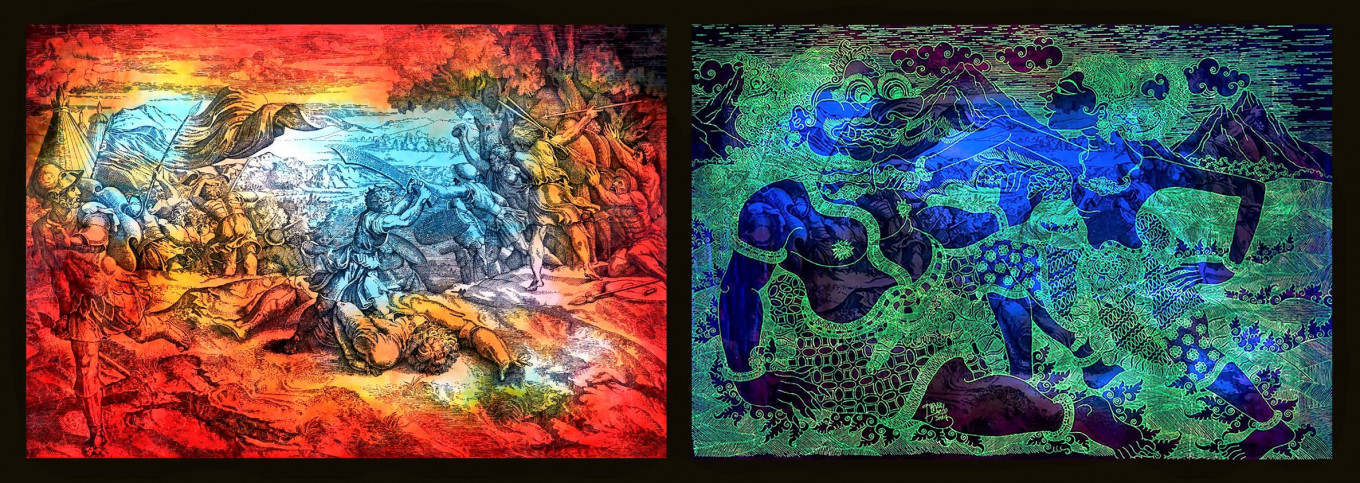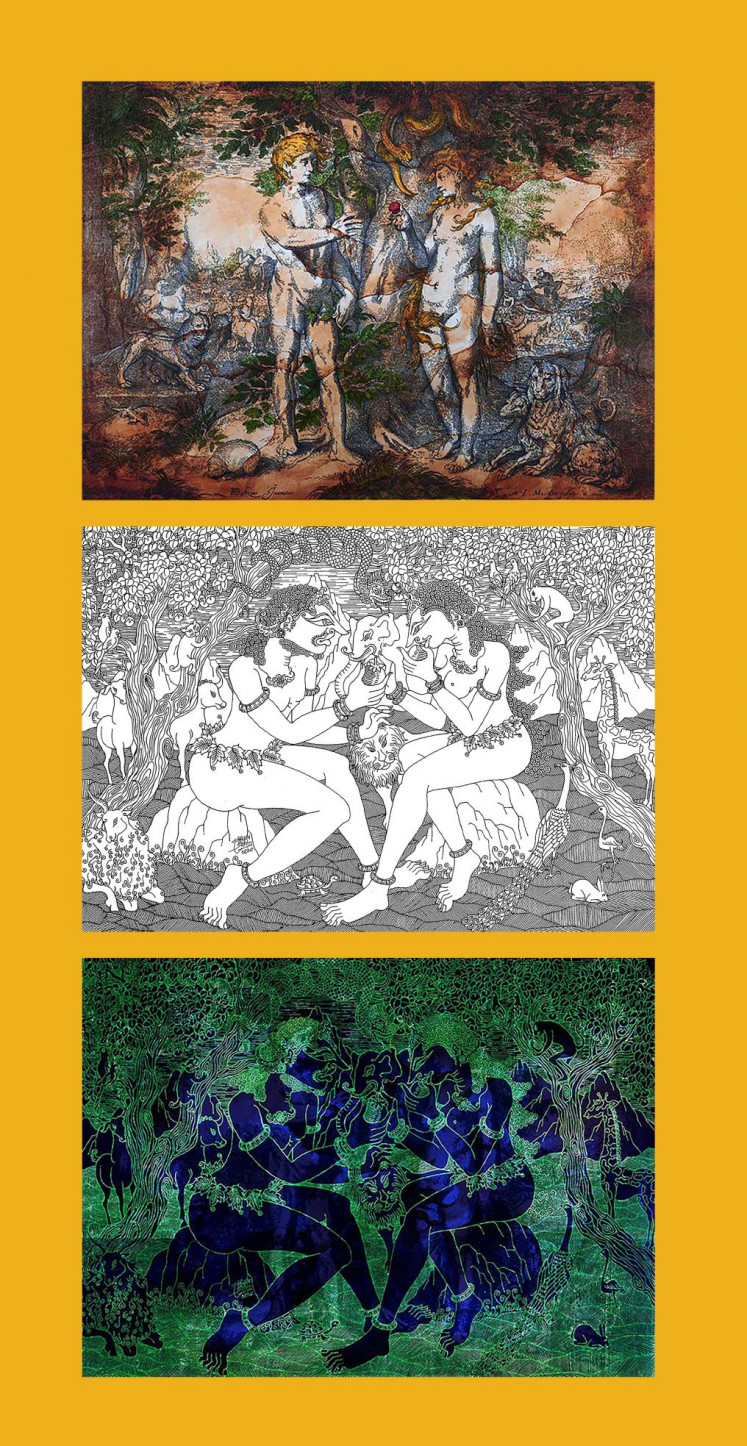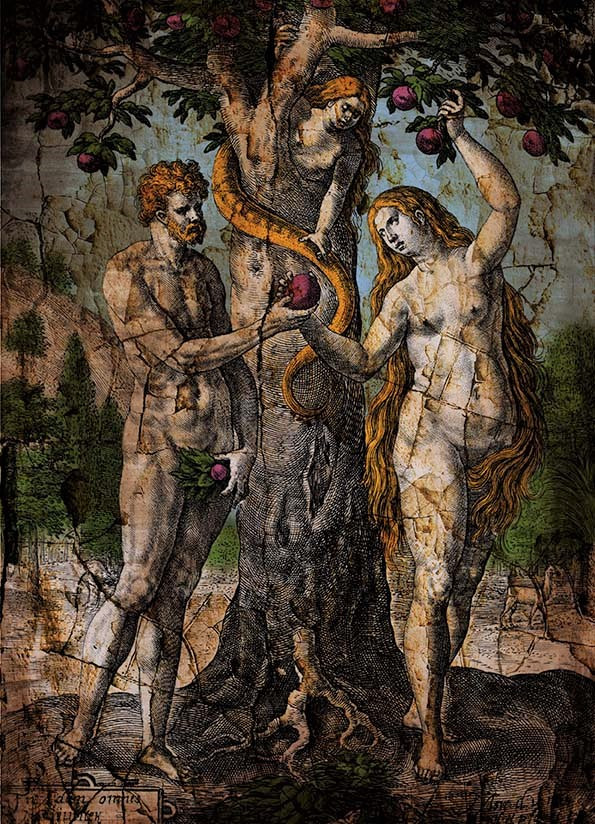Popular Reads
Top Results
Can't find what you're looking for?
View all search resultsPopular Reads
Top Results
Can't find what you're looking for?
View all search resultsEddy Susanto puts Java as the center of the world in his works
Eddy Susanto’s visually juxtapositional artwork are as phenomenal as they are inspiring, creating a niche genre in contemporary art that is entirely his own.
Change text size
Gift Premium Articles
to Anyone
E
ddy Susanto is an avid reader and researcher of cultural phenomena around the world that resonate with similar occurrences in his beloved Java.
The artist first gained notice through the work he exhibited at the Bandung Contemporary Art Awards that illustrated the arrival of Islam in Java by “appropriating” a composition by German Renaissance painter Albrecht Dürer.
In depicting Islam’s mid-14th century arrival in Java with the arrival of the Renaissance in Europe in the late 14th to early 15th centuries, Eddy uses Javanese script to combine the telling of the former in the Babad Jawa chronicle with images from Dürer’s The Men’s Bathhouse.
The visualization aims to juxtapose two events that occurred around the same period but thousands of leagues apart, and compares the arrival of Islam that liberated the Javanese people from ceremonial duties with the liberalism of the Renaissance’s memento mori, a reminder of human mortality.
Eddy has since created multiple pieces that denote similarities between events in Java and in the wider world through juxtaposition.
Born in 1975 in Jakarta and graduating from the Indonesian Arts Institute in 1996, Eddy has held 18 solo exhibitions and taken part in numerous group exhibitions since 2007. His art appears in the collections of museums and other public venues, as well as private homes.
In his most recent piece, Eddy refers to the biblical story of David and Goliath in noting that the Babad Jawi tells a similar story of Arjuna killing a giant during the Perang Kembang (Flower War). If David felled Goliath with a slingshot and then chopped off his head, Arjuna slays the giant with a kris during the Perang Kembang in the “Wayang Purwa” chapter of the Mahabharata.
Transformation: Eddy Susanto’s work 'Adam and Eve in Paradise' (top) is appropriated from Jacob Matham, with text in Javanese script about the story shaping the images; while the drawing (center) is his own imagery based on 'Wayang Wahyu' and in the fashion of 'Wayang Purwa'; and the transformed work (bottom) results after a UV light is switched on. (Courtesy of Eddy Susanto/-)Eddy uses a piece by Italian Renaissance engraver Marcantonio Raimondi, David Beheading Goliath, superimposes it with Latin text from the Dead Sea Scrolls, that renders a rather realistic portrayal of the event that, when turning on a UV light, transforms into the Javanese event in a truly fascinating technical feat.
He employs the same magical use of UV light in reimagining Jacob Matham’s Adam and Eve in Paradise. In ordinary light, the original Baroque painting is framed with Javanese script that depicts text from Sejarah Kawitane Wong Jawa Lan Wong Kanung (history of the origins of the Javanese and the Chinese).
Eddy then created a drawing of his own on silkscreen in the style of wayang Wahyu – a type of wayang puppetry typically used to promote Christianity, entailing images in the comic genre that the priest Wignyosoebroto modified from images in the Book of Genesis.
But Eddy’s work here is further inspired by the Serat Paramayoga manuscript in the fashion of the wayang Purwa. While this may be confusing for those unfamiliar with the various types of wayang puppetry, the result is simply fabulous, with the switch to UV rays bringing to light an imagery that is beyond the imagination.
This year, Eddy also created a piece for ARTJOG 2020 that surpasses his usual techniques and compositions: a realistic fantasy in three pieces depicting Adam and Eve’s story from Heaven to Earth.
He created the image in a modified Wayang Wahyu style to be subsequently presented as a Wayang Beber performance, a type of wayang in which the dalang (puppet master) narrates the tale using scroll paintings.
“It is the oldest form of wayang. And it is almost extinct in Indonesia,” says Eddy.
The entire piece is to be presented at this year’s ARTJOG by a dalang accompanied by an orchestra in video format to comply with the COVID-19 health protocol. But the three pieces representing three scenes of the story are in bamboo studded frames outside the video installation.
Adam and Eve has been popular through the ages among artists, including Eddy, who interprets the theme through varied techniques.
In contrast: 'Adam & Eva after Crispijn van de Passe' is one of Eddy Susanto’s five paintings for the ARTJOG exhibition from his Cosmology series, which contrasts controversial theories that juxtapose imagery of religious cosmology with text from physical cosmology in one frame. (Courtesy of Eddy Susanto/-)Besides his wayang rendition, Eddy has also created 10 paintings based on the original works of 10 Renaissance painters, including Crispijn van de Passe, Zacharias Dolendo, Jan Saenredam and Cornelis Galle, of which five are in the exhibition at ARTJOG 2020.
The clue to these paintings is that each unites two contrasting perspectives about Adam and Eve in a single frame: while the images follow religious cosmology, the superimposed text reflects the opposing theory of physical cosmology held by Sir Thomas Burnet, who employed theology, geology and other scientific approaches to the universe’s origins.
Eddy’s artwork reflects his extensive knowledge and command of global trends in arts and culture, as well as his in-depth studies in comparative history. His research has led him to a firm belief that his homeland of Java is the center of the world. As he puts it, “all my work draws a line to Java”. (ste)













